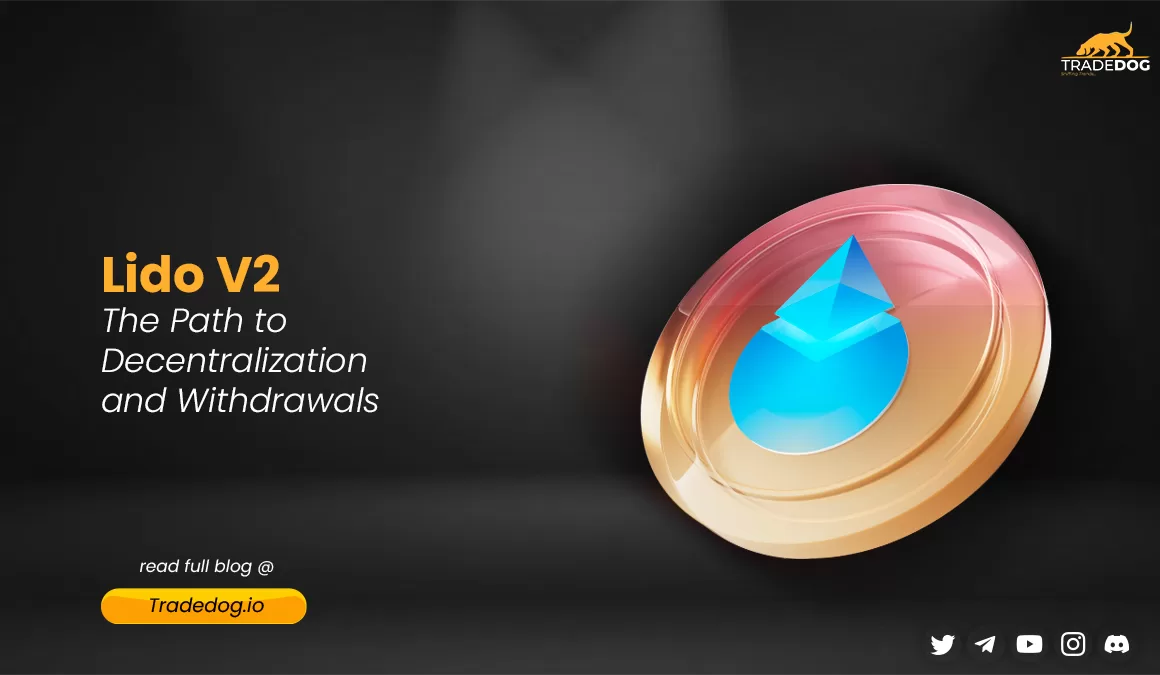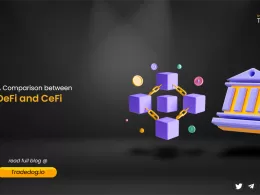Quick Links
The Lido protocol is making significant strides in its journey towards decentralization with the introduction of Lido V2, its most substantial upgrade to date. This upgrade focuses on two key aspects: the Staking Router and withdrawals, marking a significant milestone for Lido and the Ethereum staking ecosystem.
Before explaining Lido V2, let’s understand what Lido is and how it has made a difference in the staking process of Ethereum. In a very simple language, the Lido protocol is an Ethereum liquid staking protocol wherein the depositor of ETH gets a liquid token, stETH, which can be additionally staked to earn rewards. To learn more about Lido Finance, click on the link.
Lido V2
The primary objective of Lido on Ethereum is to provide an alternative to centralized staking platforms while eliminating the complexities and costs associated with running a solo node. Lido has always prioritized security and usability for its users, and this proposal aims to enhance further the platform’s inclusivity, transparency, and openness.
Lido V2 is aligned with the Shanghai/Cappella hard fork on Ethereum, which enabled withdrawals for stakers on April 12, 2023, who have supported the network since its early days. This implementation allowed users to stake and unstake their assets at will.
Staking Router
Lido’s major protocol upgrade sets the stage for more modular and composable architecture. The Staking Router provides a platform for stakers, developers, and node operators to collaborate seamlessly and contribute to Ethereum’s decentralization. The Staking Router provides a simple on-ramp for onboarding new node operators to the protocol.
With Lido v1, users’ Ether was distributed among 29 node operators, garnering criticism from onlookers unconvinced by the protocol’s claimed decentralization. The new module allows a wide range of users (~100) to apply to operate nodes via Lido, from solo stakers to professional entities, bolstering the decentralization of its validators.
Each module within the Staking Router manages an internal operator registry, handles validator keys, and allocates stakes and rewards among the participating operators. This modular approach enables faster experimentation with different node operator configurations, simplifying the iterative process of expanding the set of Node Operators.
The Staking Router also paves the way for various Node Operators to participate in the Lido protocol, including solo stakers, small groups, DAOs, and professional node operators. Node Operators can participate in multiple modules, potentially storing their keys on Layer 2 or off-chain, which lowers protocol costs and increases the number of potential node operators.
Lido V2: Withdrawals
The introduction of withdrawals in Lido V2 allows stETH holders to withdraw their assets from Lido at a 1:1 ratio. This feature is crucial for liquid staking and aligns with Lido’s commitment to providing a user-friendly experience. The withdrawal mechanism includes two modes: Turbo and Bunker mode.
Turbo Mode
It is the default and ensures quick withdrawal processing using available ETH from user deposits and rewards.
Bunker Mode
It comes into play during catastrophic scenarios, preventing sophisticated actors from gaining an unfair advantage.
To ensure the security of the Lido V2 upgrade, the protocol has undergone seven independent audits. The launch of Lido V2 follows a carefully planned schedule, including code freeze, security audits, signal snapshot votes, testnet testing, withdrawal credentials rotation ceremony, and protocol upgrade deployment.
Lido V2 opens up opportunities for external contributors from the Ethereum ecosystem to propose Staking Router modules that align with Lido’s mission. The DAO will review and vet these proposals, fostering collaboration and research to enhance the Lido protocol further.
Conclusion
Lido V2 represents a significant step towards decentralization and withdrawals in the Ethereum staking ecosystem. With its modular architecture, the Staking Router promotes diversity, flexibility, and inclusivity. This upgrade’s two major focal points are the Staking Router and withdrawals. These advancements aim to create a more diverse validator ecosystem and allow stETH holders to withdraw their funds from Lido, thereby enabling seamless on/off-ramping into the Ethereum staking ecosystem.










